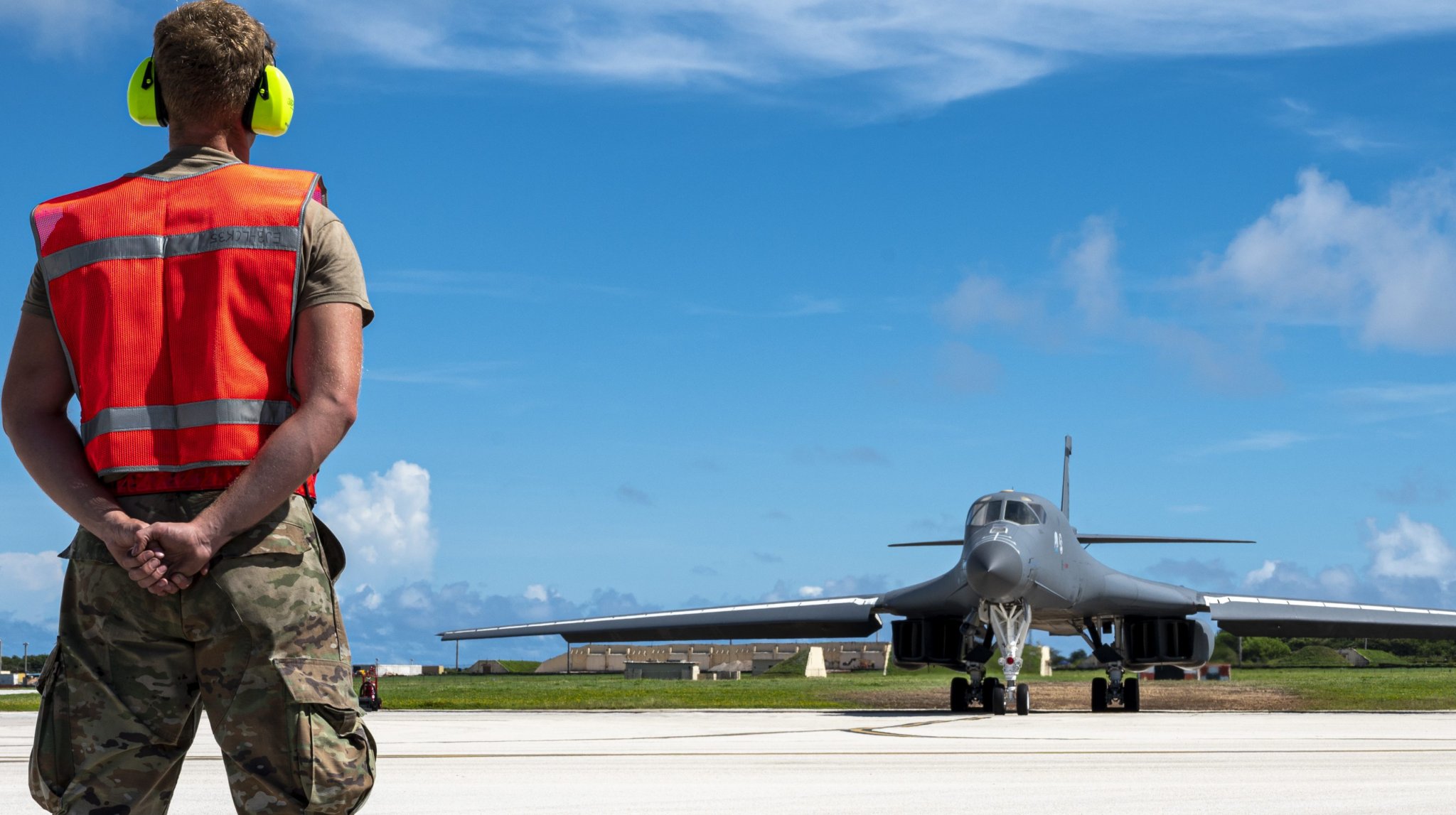

A crash that destroyed a B-1B bomber at Ellsworth Air Force Base in January was the result of pilot error and poor leadership on the base that led to “unsatisfactory levels of basic airmanship, an inadequate focus on foundational governing directive knowledge, and an overall lack of discipline throughout the 34th Bomb Squadron,” according to a cutting report issued by an Air Force accident investigation board.
The pilot of a B-1B failed to compensate for bad weather and severe winds known as wind shear while landing in January at fog-covered Ellsworth, just outside Rapid City, South Dakota. The plane struck the ground and skidded down the base’s runway for nearly 5,000 feet before coming to a stop between two of the airfield’s taxiways, according to the investigation report. The aircraft caught fire and was ruled a total loss of $456,248,485.
The pilot and the crew made several mistakes, the board found, but their errors were rooted in a flying culture in the unit that the board found was not focused on safety, discipline or maintaining standards.
All four of the crew members ejected when the plane hit the ground. Two were injured, with one hospitalized after a temporary loss of consciousness. The investigation linked one crewmember’s ejection injuries to his weight, which was nearly 260 pounds, over the ejection seat’s 245-lbs weight limit for safe use, the report said. The report found that the same crewmember had been at or near that weight at several medical checks and once was allowed to continue flying with a “self-reported” weight of 245.
Col. Erick Lord, the accident board president and report author, said the crewmember’s weight and the pilot’s mistakes were indicative of larger problems in the associated units. In more damning language, he wrote that the failures leading up to the crash were not an “aberration” but, instead, reflective of a “culture of noncompliance.”

Pilot errors
The Air Force accident investigation report found “a preponderance of the evidence” that the mishap was caused by crewmembers not communicating to check each other’s awareness of the aircraft’s decreasing airspeed, descent rate, and incorrect flight path.
During questioning, the systems operator admitted that in the seconds leading up to the crash, he referred to his After Landing Checklist instead of correcting the crew’s “discipline dereliction.” The crash was also the result of “ineffective flight supervision” because one person acted as both Supervisor of Flying and Operations Supervisor.
The investigation also linked the crash to weather with low visibility and an undetected wind shear. The report notes that a pilot’s reaction to an aircraft losing tailwind and climbing above the glide path can be “an overcorrection, which can lead to a descent below the glide path without enough altitude to correct.” This results in a high sink rate and hard landing, according to the investigation.
Once the wind stabilized, the pilot failed to increase core rpm as the airspeed decreased to “catch” their approach speed. Their 152 KCAS approach speed, instead of what should’ve been 164, is for an aircraft that is 40,000 lbs lighter than the B-1B at the time of the accident.
Subscribe to Task & Purpose today. Get the latest military news and culture in your inbox daily.
Culture of noncompliance
Col. Erick Lord, the accident board president and report investigator said the weight and crew mistakes were indicative of the larger problems in the associated units. In more damning language, he wrote that the failures leading up to the crash were not an “aberration” but, instead, reflective of a “culture of noncompliance.”
Lord said that the 34 Bomb Squadron’s “lack of discipline” and focus on basic airman skills, coupled with the 28 Operations Support Squadron’s ineffective communication, inadequate program management and lack of supervision, “set conditions that allowed this mishap to occur.”
In various interviews with members of the squadron, the investigation uncovered airmen’s lack of understanding and application of cold weather altitude corrections, landing restrictions and current weather sensing capabilities on the airfield.
The investigation also said that many of the squadron’s assistant Director of Operations positions were unfilled which forced decision-making authority to flight commanders and Senior NCOs. The 28 OSS “underestimated the impact caused by the leadership vacuum” and the manning decisions led to “an overall loss of leadership.”
Air Force Global Strike Command said in a release that the chain of command is in the process of responding to the report and taking the appropriate corrective actions.
The latest on Task & Purpose
- What does Project 2025 mean for military veterans?
- Air Force colonel fired at Eglin Air Force Base 3 days before command change
- J.D. Vance is first veteran on Presidential ticket since John McCain
- Marine recruit loses more than 100 pounds to graduate from boot camp
- Project 2025’s plan for the US military
